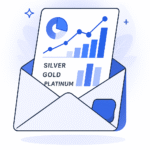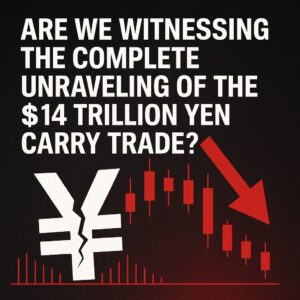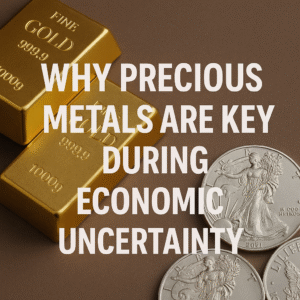Precious metals have always played a central role in the global financial system, acting as both industrial materials and long-standing stores of value. In 2025, the forces driving gold, silver, platinum, and palladium prices are more interconnected than ever, shaped by shifting economic conditions, evolving geopolitical tensions, and rapid changes in industrial demand. While precious metals have traditionally been guided by macroeconomic trends, the landscape today includes additional elements ranging from renewable energy technology to mining supply constraints.
Understanding the top factors influencing precious metal prices in 2025 is essential for investors, analysts, and anyone tracking the movement of financial markets. Each metal responds differently to the same broad forces, yet all share a common sensitivity to the global economy, interest rate expectations, industrial usage patterns, and investor sentiment. This article explores the most significant drivers shaping precious-metal performance this year and examines how these forces may evolve as conditions change throughout 2025.
Global Monetary Policy and Interest Rates
One of the most influential determinants of precious-metal pricing in 2025 is global monetary policy, particularly decisions made by central banks in major economies. Precious metals have long been inversely correlated with real interest rates. When rates fall or expectations shift toward loosening monetary policy, the opportunity cost of holding non-yielding assets like gold and silver declines, increasing demand. Conversely, higher rates can put downward pressure on metal prices.
As 2025 progresses, markets remain highly sensitive to signals from central banks regarding inflation management, employment trends, and economic growth. Decisions from the U.S. Federal Reserve carry the most weight, but policy moves from the European Central Bank, the Bank of England, and central banks in emerging markets also influence sentiment. A shift toward rate cuts would generally be supportive of precious metals by making them more attractive relative to interest-bearing securities. Meanwhile, any indication of prolonged tightening or a delayed easing cycle can create headwinds.
Investors also monitor real interest rates, which incorporate inflation expectations. Even if nominal rates remain unchanged, rising inflation expectations can decrease real yields and improve the appeal of metals. Because of this dynamic, precious-metal markets pay close attention to inflation data releases, consumer price indices, and forward-looking inflation expectations implied by bond markets.
Inflation Trends and Currency Movements
Precious metals have historically served as a hedge against inflation and currency depreciation, a role that continues in 2025. When the purchasing power of major currencies weakens, demand for physical metals often increases as investors seek assets with long-term stability. Gold, in particular, has a strong track record as an inflation hedge, but silver and platinum-group metals can also benefit when broad inflation concerns emerge.
In 2025, inflation remains a central topic in many countries, influenced by supply-chain adjustments, commodity cycles, and fiscal policies. While inflation has moderated from earlier peaks in several large economies, uncertainty persists about long-term price trends. Energy costs, housing prices, and labor-market dynamics continue to affect inflation trajectories.
Currency movements are equally important. A strengthening U.S. dollar can put downward pressure on precious metals denominated in dollars, making them more expensive for foreign buyers. Conversely, a weaker dollar typically supports higher precious-metal prices. Investors also track currency volatility in emerging markets, particularly those that consume significant volumes of gold, such as India and China. Variations in currency strength can either boost or reduce local demand depending on affordability.
Geopolitical Tensions and Global Stability
Geopolitical developments remain one of the most immediate drivers of precious-metal market movements. In periods of heightened tension, investors often turn to gold and, to a lesser extent, silver as safe-haven assets. Events such as territorial disputes, military conflicts, trade disagreements, and political instability can influence prices within minutes.
In 2025, several regions continue to contribute to geopolitical uncertainty. Tensions between major world powers, changes in defense strategies, and shifting alliances all contribute to market volatility. Energy geopolitics, particularly involving major oil and gas-producing nations, also play a role because energy costs impact mining operations and industrial demand.
Precious metals respond differently to varying types and intensities of geopolitical events. Gold typically sees the strongest reaction, serving as a global safe-haven asset with deep liquidity. Silver may experience spillover effects but is more influenced by industrial factors. Platinum and palladium, due to their concentrated supply sources, are affected when geopolitical disruptions threaten mining output or transportation routes.
Industrial Demand and Technology Trends
While store-of-value demand plays a major role in gold and silver pricing, industrial usage exerts significant influence, especially in 2025. Silver is a critical metal for electronics, energy systems, medical technology, and especially solar energy. Platinum and palladium are key components in catalytic converters, hydrogen technology, and various chemical processes.
The rapid expansion of renewable energy infrastructure continues to shape silver demand. Photovoltaic capacity additions worldwide are increasing, pushing steady consumption of silver in solar panels. As governments implement renewable-energy targets and expand clean-energy investment, silver’s industrial demand remains supported.
Platinum-group metals are influenced heavily by the automotive sector. The transition from traditional combustion engines to hybrid and electric vehicles affects palladium and platinum differently. Palladium demand faces potential pressure from a gradual decline in gasoline vehicle production, while platinum could see renewed demand through hydrogen fuel-cell technologies. These structural shifts play an important role in shaping PGMs’ long-term outlook.
More broadly, global manufacturing activity, semiconductor production, and technological innovation drive consumption of precious metals. Any slowdown in manufacturing can reduce industrial demand for silver, platinum, and palladium. Conversely, strong industrial expansion typically supports higher prices.
Mining Supply and Production Constraints
Supply-side dynamics play a central role in precious-metal markets, and 2025 continues to highlight structural challenges within the mining industry. Bringing new mines into production requires significant capital investment, permitting, and exploration success—processes that often take years. As a result, supply tends to adjust slowly compared to demand.
Gold supply has remained relatively stable but faces long-term constraints due to declining ore grades and fewer new discoveries. Many established gold mines have moved into lower-grade zones, increasing production costs. In certain regions, mining operations face regulatory pressure, environmental restrictions, or challenges arising from water shortages and energy costs.
Silver supply is influenced both by primary silver mines and by production from lead, zinc, and copper mines. Because most silver is produced as a by-product, supply does not always respond quickly to changes in silver pricing. If base-metal mines slow production or reduce output due to economic conditions, silver supply may tighten even if demand remains strong.
For platinum and palladium, supply is geographically concentrated, with a significant portion coming from South Africa and Russia. Any labor disputes, energy shortages, logistical disruptions, or geopolitical developments in these countries can affect global supply levels and lead to price volatility. PGMs also require ongoing investment in deep, complex mining operations, which are sensitive to rising input costs and regulatory expectations.
Investment Demand and Market Sentiment
Investor sentiment is one of the most powerful and immediate influences on precious-metal prices. Physical bullion purchases, exchange-traded fund (ETF) inflows and outflows, futures market positioning, and central-bank activity all contribute to the short- and long-term trajectory of metal prices.
In 2025, investment demand is shaped by several themes: uncertainty over global economic growth, shifting interest-rate expectations, equity-market volatility, and fluctuations in cryptocurrency markets. When risk-on sentiment dominates, precious metals may experience selling pressure as investors pursue higher-yielding opportunities. When risk-off behavior takes hold, safe-haven demand often increases.
Central banks remain significant buyers of gold in many regions. Their purchases reflect long-term diversification strategies, currency-reserve management, and efforts to reduce dependence on foreign assets. Central-bank gold buying has provided steady support for gold prices in recent years and continues to be a factor in 2025.
Retail investment demand also plays a meaningful role. In some countries, cultural preferences strongly influence gold buying, particularly during holiday seasons or periods of income growth. Retail silver demand can fluctuate based on affordability and shifts in investor perception of silver’s dual role as an industrial and monetary metal.
Energy Prices and Production Costs
Energy is a major input cost for mining operations, and fluctuations in oil, natural gas, and electricity prices directly affect production expenses. In 2025, global energy markets continue to experience volatility tied to supply disruptions, geopolitical tensions, and changing consumption patterns. Higher energy costs can reduce mining profitability and potentially tighten supply if companies scale back operations or delay new investments.
Electricity shortages or grid instability in certain mining regions also impact production, particularly in countries with aging infrastructure or energy-intensive mining processes. The cost and availability of diesel fuel, often used for heavy equipment, affect extraction, transport, and ore-processing operations.
These cost pressures can influence metal prices indirectly, as higher production costs may limit output or push marginal operations out of the market. For metals such as platinum and palladium, which rely heavily on deep mining operations with high energy demands, the impact can be significant.
Environmental Regulations and ESG Considerations
Environmental, social, and governance (ESG) considerations are playing an increasingly important role in the mining and investment sectors. Governments, investors, and communities are placing greater emphasis on responsible mining practices, carbon emissions reduction, land restoration, and community engagement.
In 2025, more mining companies are adapting to ESG expectations by incorporating cleaner technologies, improving waste-management strategies, and enhancing transparency in their operations. However, stricter regulations can lead to increased costs, permitting delays, or reduced production levels, all of which influence supply-side dynamics.
At the same time, investors committed to sustainable and ethical investing are scrutinizing the sourcing of precious metals. Increased demand for responsibly sourced gold and silver can influence market flows, premiums, and the reputation of specific producers. These trends affect metals used in clean-energy applications as well, potentially increasing demand for sustainably mined materials.
Global Economic Growth and Manufacturing Cycles
The performance of major economies has a strong impact on precious-metal pricing. Economic slowdowns often lead to decreased industrial demand for metals such as silver, platinum, and palladium. Conversely, periods of strong global growth typically support increased consumption across manufacturing, electronics, automotive production, and industrial applications.
In 2025, economic growth trends vary significantly by region. Advanced economies face different challenges and opportunities compared to fast-growing emerging markets. Global trade flows, fiscal policies, and supply-chain realignments all contribute to the overall demand environment.
Manufacturing activity, measured by indicators such as purchasing managers’ indices (PMIs), provides insight into industrial demand trends for metals. Any downturn in manufacturing can reduce the demand for silver and PGMs, while a rebound in global production tends to push prices higher. Gold, being primarily a financial asset, is less sensitive to manufacturing cycles but still influenced indirectly by broader economic conditions.
Market Speculation and Futures Positioning
The structure of precious-metal markets makes them sensitive to futures market positioning and speculative activity. Traders in futures and options markets play a significant role in determining short-term price movements, and shifts in net long or net short positions can accelerate price trends in either direction.
In 2025, precious-metal futures markets remain influenced by algorithmic trading, hedge-fund activity, and cross-asset strategies that respond to currency movements, interest-rate expectations, and volatility indicators. Rapid changes in sentiment or macroeconomic data can result in swift adjustments to positioning, contributing to price volatility.
Speculation can amplify price moves during periods of uncertainty or when liquidity temporarily tightens. These dynamics are important for understanding short-term fluctuations but also help shape the broader trend by affecting investor psychology and momentum-driven trading.
Conclusion
The factors influencing precious-metal prices in 2025 are complex and interconnected, reflecting a world where economic, geopolitical, technological, and environmental forces converge more than ever before. Precious metals continue to function as both industrial commodities and financial assets, with each type of demand responding differently to global events.
Monetary policy remains one of the most influential drivers, shaping real interest rates and the relative attractiveness of metals as investment assets. Inflation trends, currency movements, and geopolitical tensions add further layers of complexity. Industrial demand driven by renewable energy, automotive technology, and electronics plays a growing role, particularly for silver and platinum-group metals. At the same time, supply constraints, production costs, and regulatory pressures continue to affect the mining side of the equation.
Investor sentiment, central-bank purchases, and speculative activity can create short-term volatility but also contribute to longer-term trends. Energy prices, ESG considerations, and global manufacturing cycles round out the set of variables that market participants monitor closely throughout the year.
As 2025 unfolds, precious-metal markets will continue to adjust to evolving global conditions. Whether used as a hedge, an industrial input, or a strategic reserve asset, precious metals remain deeply embedded in the structure of the global economy. Understanding the diverse forces shaping their prices helps investors and analysts make better-informed decisions in a rapidly changing world.







